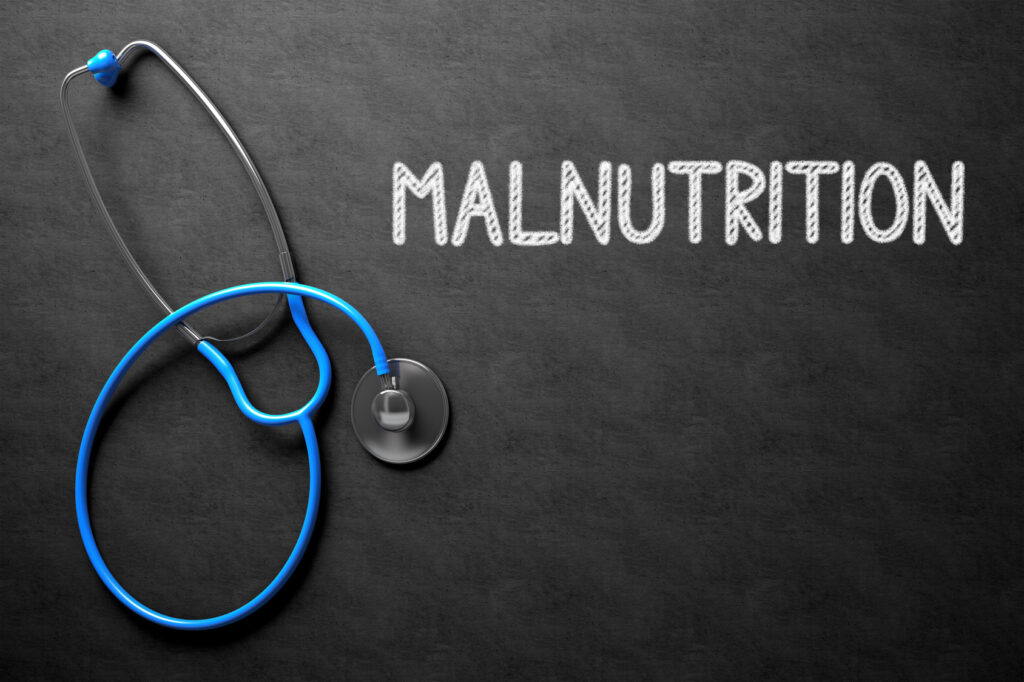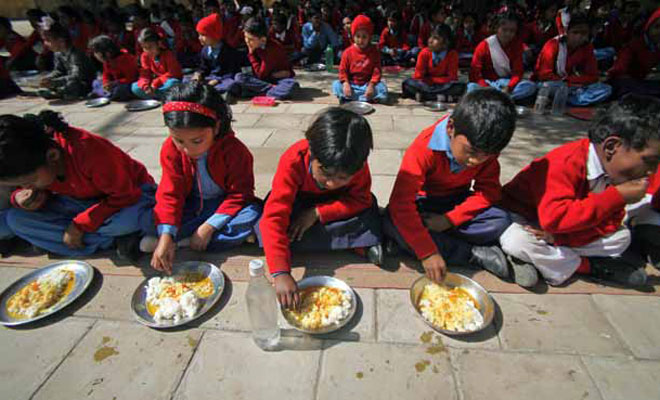As Jammu & Kashmir embarks on a mission to promote breastfeeding, support exclusive diets, and enhance healthcare accessibility, it paints a roadmap for India’s holistic fight against malnutrition
BY DR. UBAIDA SHAHID
Adequate nutrition is fundamental to child development, especially in early life. Malnutrition is an impairment of health resulting from a deficiency, excess or imbalance of nutrients. Malnutrition is a major contributor to disease burden in India. The developmental, economic, social, and medical impacts of the global burden of malnutrition are serious and lasting, for individuals and their families, for communities and for countries. Nutrition Interventions: Path Forward for J&K
In India around 36% children under the age of 5 years are stunted, 19% wasted and around 32% are underweight.
The proportion of severe malnourished children has increased in NFHS-5 (7.7%) from NFHS-4 (7.5%).
Globally, around 45% of deaths among children under 5 years of age are linked to under nutrition. These mostly occur in low- and middle-income countries.
What is malnutrition?
Malnutrition is characterized by inadequate or excessive nutrient intake, an unbalanced intake of vital nutrients, or poor nutrient use. This can happen for at least three reasons:
- When people simply aren’t getting enough food
- When people aren’t getting enough of the right kinds of food
- When people aren’t able to absorb sufficient nutrients into their body (such as when people have diarrhoea or worms or any other debilitating disease.

The term malnutrition addresses 3 broad groups of conditions [WHO]:
- Under nutrition: wasting (low weight-for-height), stunting (low height-for-age) and underweight (low weight-for-age);
- Micronutrient-related malnutrition: Micronutrient deficiencies (a lack of important vitamins and minerals) or micronutrient excess; and
- Overweight, obesity and diet-related no communicable diseases (such as heart disease, stroke, diabetes and some cancers).
Various forms of under nutrition:
- Low weight-to-height is referred to as wasting. Although it might last for a very long time, it frequently signifies sudden and substantial weight loss. It typically happens when a person hasn’t eaten enough food, both in terms of quantity and quality, or when they’ve been sick frequently or for a long time. If left untreated, wasting in children is linked to a higher risk of mortality. [WHO]
- Low height-for-age is known as stunting. It is the result of chronic or recurrent undernutrition, usually associated with poor socioeconomic conditions, poor maternal health and nutrition, frequent illness, and/or inappropriate infant and young child feeding and care in early life. Stunting holds children back from reaching their physical and cognitive potential. [WHO]
- Children with low weight-for-age are known as underweight. A child who is underweight may be stunted, wasted, or both.
Micronutrient-related malnutrition: Lack of vitamins and minerals necessary for bodily processes like the production of enzymes, hormones, and other chemicals required for growth and development is known as a micronutrient deficiency.
Overweight and obesity: Overweight and obesity is when a person is too heavy for his or her height. Abnormal or excessive fat accumulation can impair health.
Diet-related non communicable diseases: Diet-related non communicable diseases (NCDs) include cardiovascular diseases (such as heart attacks and stroke, and often linked with high blood pressure), certain cancers, and diabetes. Unhealthy diets and poor nutrition are among the top risk factors for these diseases globally. [WHO]
Who is at risk?
Specifically vulnerable to malnutrition are women, infants, children, and adolescents. Poverty exacerbates both the susceptibility to malnutrition and the potential consequences thereof. Individuals in impoverished circumstances face an elevated likelihood of being impacted by various manifestations of malnutrition. Moreover, malnutrition drives up healthcare expenses, diminishes productivity, and decelerates economic advancement, thereby perpetuating a cycle of poverty and compromised well-being.

Scope of the problem: Status of Malnutrition in the State of Jammu and Kashmir
According to statistics, nearly 15 lakh young children in Jammu and Kashmir are experiencing acute malnutrition-related illnesses, such as stunted growth. Additionally, 2, 51,393 children (under the age of five) in J&K are stunted.
High levels of under nutrition are still a major problem in Jammu and Kashmir. Though the percentage of children who are stunted decreased from 27.4 % to 26.9 % between NFHS-4 and NFHS-5, the percentage of children who are wasted has increased significantly from NFHS-4 (12.2 %) to NFHS-5 (19.0 %), and the percentage of underweight children has also increased from 16.6 % to 21.0 % between NFHS-4 and NFHS-5.
Child Malnutrition Status J&K (NFHS)

Differences in the levels of malnutrition are more pronounced for several background characteristics. Malnutrition generally decreases with increasing mother’s schooling, better nutritional status of the mother, and larger child’s size at birth. Malnutrition is somewhat higher for male children than female children on all three nutritional status measures.
The level of under nutrition is relatively high for rural children.

Status of key factors associated with the burden of malnutrition:
- Early initiation of breastfeeding has significantly increased to 55.6 % (NFHS-5) in the state from NFHS-4 (45.7 %) though exclusive breastfeeding has decreased from 65.4 % NFHS-4 to 62.0 % (NFHS-5).
- Only 41.8 % children (6-8 months) receiving solid or semi-solid food and breast milk, whereas as only 12.4 % NFHS-5 children age 6-23 months receiving an adequate diet and has decreased from 21.8 % NFHS-4
- 72.7% children are anaemic in the state.
How to tackle the burden of malnutrition:
Several factors influence the nutritional status in children under 5 years of age; extremes of malnutrition may coexist with high prevalence of stunting, overweight and obesity at the same time. In addition, high prevalence of anaemia may also be present. Nutrition interventions should be comprehensive in order to reach the multiple burdens of malnutrition.
Proposed plan of action for addressing the malnutrition in the State of Jammu and Kashmir:
- Action-1: Promotion of Early Initiation of Breastfeeding.
- Action-2: Promotion and support for exclusive and continued breastfeeding
- Action-3: Promotion of age-appropriate complementary feeding practices
- Action-4: Advocacy for adequate food- right foods- in quality and quantity-fed frequently from 6 to 24 months ensure optimal growth and development.
- Action-5: Promotion and awareness generation activities for good hygiene practices.
- Action-6: Supplementation of Iron/Vita-A and deworming activities.
- Action-7: Early identification and timely care to severely acute malnutrition.
- Action-8: Improving nutrition of adolescent girls to secure the nutrition of children tomorrow.
- Action-9: Better nutrition, particularly during pregnancy and lactation.
- Action-10: Monitoring every month every child.
- Action-11: Convergence at all levels of stakeholders.
- Action-12: Health-care system strengthening, reaching the unreached, data system strengthening, community mobilization and monitoring, and evaluation for accountability.
Actions for every child

Government of India’s Initiatives:
Government of India has launched POSHAN Abhiyaan to address malnutrition challenges in India. The goal of POSHAN Abhiyaan is to achieve improvement in nutritional status of children 0-6 years, pregnant women and lactating mothers. Besides various interventions are being implemented under National Health Mission (NHM), MoHFW across the state to reduce the burden of malnutrition in India. Key interventions under NHM are:
- Anemia Mukt Bharat (AMB)
- Home Based care of Newborn & Young Child (HBNC & HBYC)
- Intensified Diarrhoea Control Fortnight (IDCF)
- National De-worming Day (NDD)
- Nutrition Rehabilitation Centres (NRCs)
- Universal Immunization Programme (UIP)
- Vitamin A supplementation
- Promotion of breastfeeding
Conclusion:
Child malnutrition in India is a complex problem that requires a systemic overhaul of the public administration and service delivery systems, as well as engagement from the community. It is also important to strengthen inter-departmental convergence and resource allocation based on real-time data and timely service, tracking & monitoring of each children and targeted interventions to reduce the burden of malnutrition.

[…] most vital roles is in supporting infants during their early development. When a mother consumes a nutritious diet and drinks pure milk herself, the milk she produces for her child becomes full of essential […]